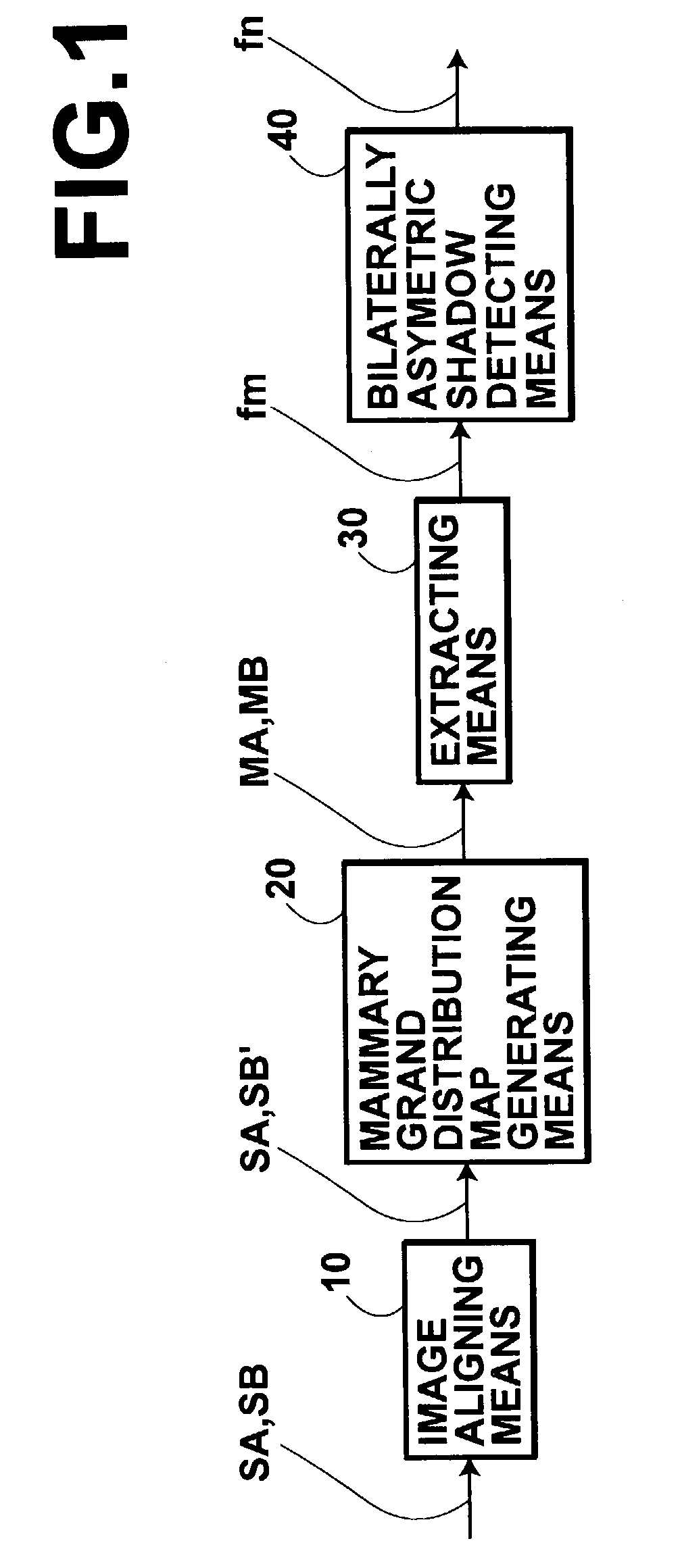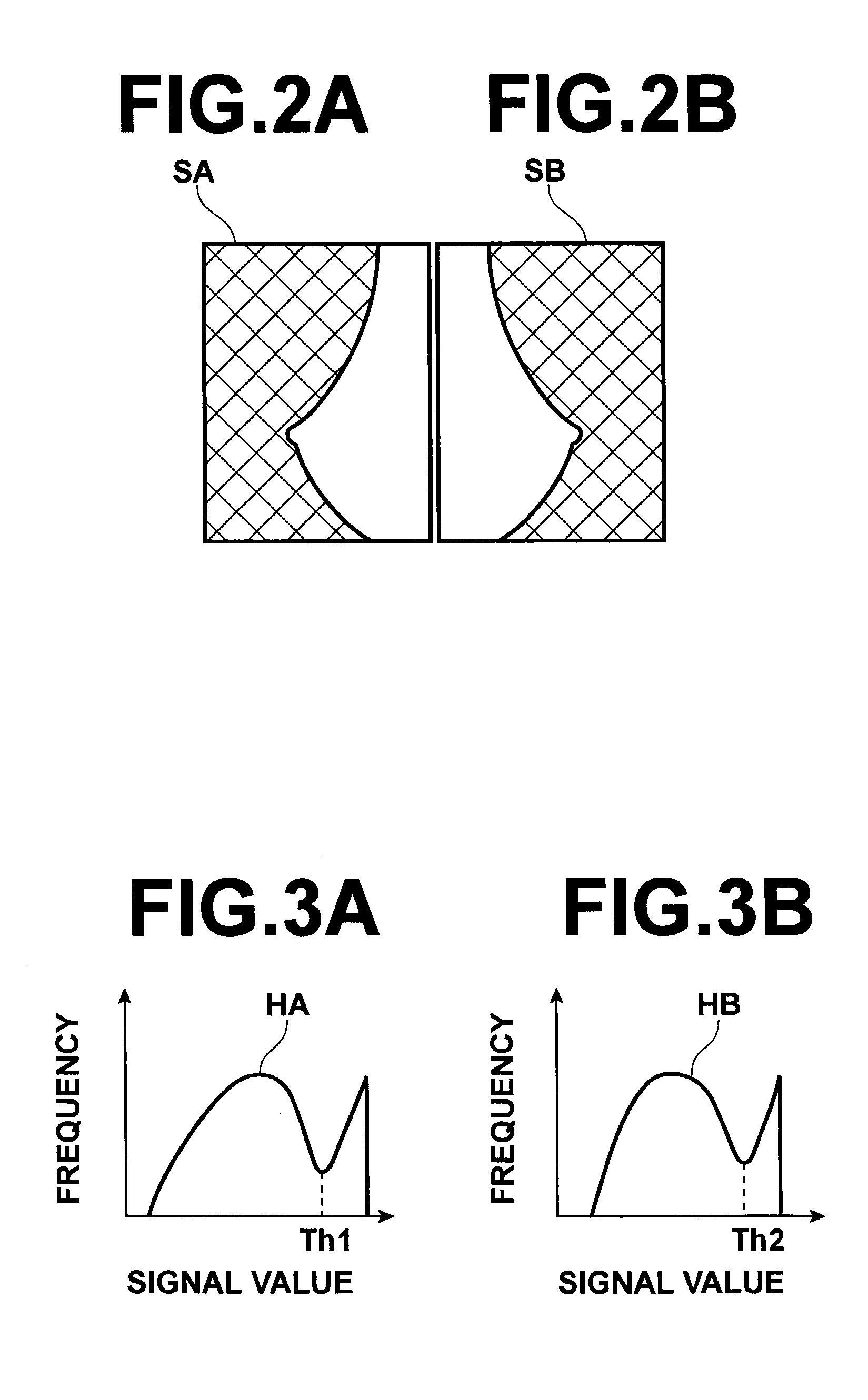Abnormal shadow detecting system
a radiation image and shadow detection technology, applied in the field of radiation image abnormal shadow detection system, can solve the problems of not being objective, not necessarily detecting, and not being able to properly detect abnormal shadows, so as to achieve efficient detection, difficult to detect, and difficult to detect
- Summary
- Abstract
- Description
- Claims
- Application Information
AI Technical Summary
Benefits of technology
Problems solved by technology
Method used
Image
Examples
first embodiment
[0038]In FIG. 1, an abnormal shadow detecting system in accordance with the present invention comprises an image aligning means 10 which aligns side image data for a right breast (image data representing a side view of a right breast) SA and side image data for a left breast (image data representing a side view of a left breast) SB with each other so that a profile of the image of the right breast (FIG. 2A) represented by the image data SA and a profile of the image of the left breast (FIG. 2B) represented by the image data SB become substantially bilaterally symmetric, a mammary gland distribution map generating means 20 which generates mammary gland distribution maps MA (FIG. 5A) and MB (FIG. 5B) respectively for the right and left breasts by dividing images of the right and left breasts aligned by the image aligning means 10 into a plurality of ranges according to the density of the image, an extracting means 30 which extracts bilaterally asymmetric ranges fm (m stands for 1, 2, ...
second embodiment
[0054]An abnormal shadow detecting system in accordance with the present invention will be described, hereinbelow.
[0055]In FIG. 6, an abnormal shadow detecting system in accordance with a second embodiment of the present invention comprises an image aligning means 10 which aligns side image data for a right breast (image data representing a side view of a right breast) SA and side image data for a left breast (image data representing a side view of a left breast) SB with each other so that a profile of the image of the right breast (FIG. 2A) represented by the image data SA and a profile of the image of the left breast (FIG. 2B) represented by the image data SB become substantially bilaterally symmetric, a mammary gland distribution map generating means 20 which generates mammary gland distribution maps MA (FIG. 5A) and MB (FIG. 5B) respectively for the right and left breasts by dividing images of the right and left breasts aligned by the image aligning means 10 into a plurality of ...
PUM
 Login to View More
Login to View More Abstract
Description
Claims
Application Information
 Login to View More
Login to View More - R&D
- Intellectual Property
- Life Sciences
- Materials
- Tech Scout
- Unparalleled Data Quality
- Higher Quality Content
- 60% Fewer Hallucinations
Browse by: Latest US Patents, China's latest patents, Technical Efficacy Thesaurus, Application Domain, Technology Topic, Popular Technical Reports.
© 2025 PatSnap. All rights reserved.Legal|Privacy policy|Modern Slavery Act Transparency Statement|Sitemap|About US| Contact US: help@patsnap.com



